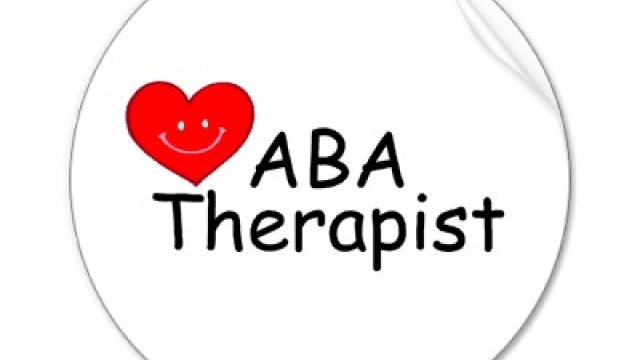Welcome to the world of Applied Behavior Analysis (ABA), a groundbreaking therapeutic approach that has revolutionized the way we understand and shape human behavior. ABA therapy has gained immense recognition in recent years for its effectiveness in improving the lives of individuals with autism spectrum disorders (ASD). Through the meticulous observation of behavior, the application of behavioral principles, and the use of evidence-based interventions, Applied Behavior Analysis offers a systematic and tailored approach to address a wide range of behavioral challenges.
At its core, ABA therapy is focused on understanding the relationship between behavior and the environment in which it occurs. By examining the antecedents (triggers) and consequences (reinforcers) of behavior, behavior analysts are able to identify the underlying factors contributing to specific actions. This comprehensive understanding helps to shape positive behaviors and reduce or eliminate challenging behaviors that may impede an individual’s progress and independence.
One of the defining features of Applied Behavior Analysis is its emphasis on individualized treatment plans. This tailored approach recognizes that each person has unique skills, preferences, and challenges. By conducting thorough assessments and evaluations, behavior analysts are able to gather in-depth information about an individual’s strengths and areas for growth. This information serves as a foundation for designing interventions that are specifically tailored to address the individual’s needs and goals.
As we delve further into the world of Applied Behavior Analysis, we will explore the principles that guide this effective therapeutic approach, the techniques and strategies utilized in ABA therapy, and the incredible impact it has on individuals with ASD and other populations. Whether you are a parent, caregiver, educator, or simply curious about this transformative field, join us in mastering the art of Applied Behavior Analysis and unlocking the full potential of individuals through the power of behavior.
Key Principles of Applied Behavior Analysis
Applied Behavior Analysis (ABA) is a therapeutic approach that focuses on the principles of behavior and how they can be used to improve human behavior. Through the use of ABA therapy, individuals are able to develop new skills, reduce problematic behaviors, and enhance their overall quality of life. Here are three key principles that form the foundation of Applied Behavior Analysis:
-
Positive Reinforcement: ABA therapy emphasizes the power of positive reinforcement in promoting desired behaviors. Positive reinforcement involves providing rewards or incentives to encourage individuals to engage in certain behaviors. By pairing a desired behavior with a positive consequence, such as praise or a token, individuals are more likely to repeat that behavior in the future. This principle highlights the importance of focusing on what individuals are doing correctly and reinforcing their efforts to promote lasting behavior change.
-
Behavior Modification: ABA therapy places great emphasis on behavior modification techniques to shape and alter behavior. This involves breaking down complex behaviors into smaller, manageable steps and providing support and guidance for individuals to learn and practice these steps one at a time. By teaching new skills gradually and systematically, ABA therapy aims to promote the acquisition of desired behaviors and reduce unwanted or challenging behaviors by replacing them with more adaptive alternatives.
-
Data-driven Approach: Applied Behavior Analysis relies on a data-driven approach to assess and monitor behavior change. This involves collecting and analyzing data to objectively evaluate the effectiveness of interventions and track progress over time. By systematically measuring behavior and analyzing the gathered data, therapists can make informed decisions about intervention strategies, make necessary adjustments, and ensure that progress is being made towards desired outcomes.

ABA therapy for social anxiety
In summary, ABA therapy is founded on key principles such as positive reinforcement, behavior modification, and a data-driven approach. By understanding and applying these principles, practitioners of Applied Behavior Analysis can effectively promote the development of new skills, reduce problematic behaviors, and ultimately improve the lives of individuals.
Components of ABA Therapy
ABA therapy, also known as Applied Behavior Analysis, encompasses various components that are essential in achieving behavior change and improvement. These components work together to create a comprehensive approach aimed at modifying behavior systematically and effectively.
The first component of ABA therapy is the process of conducting thorough assessments. This involves gathering detailed information about the individual’s current behavior, environment, and any potential factors that may influence their behavior. By analyzing this information, ABA professionals can gain a better understanding of the underlying causes of behavior and develop appropriate intervention strategies.
Another crucial component of ABA therapy is the implementation of behavior intervention plans. Based on the assessment results, specific goals and objectives are established to target the desired behavioral outcomes. ABA professionals utilize evidence-based techniques and strategies to teach new skills and behaviors while simultaneously reducing unwanted or problem behaviors. This individualized approach ensures that interventions are tailored to the unique needs of each person receiving ABA therapy.
Data collection and analysis form an integral component of ABA therapy. By systematically collecting data on the target behaviors, ABA professionals can measure progress and identify patterns or trends. This empirical approach helps in making informed decisions about the effectiveness of the interventions and guides the ongoing refinement of the behavior intervention plans. Accurate data collection and analysis are fundamental to gauging the success of ABA therapy and making necessary adjustments to ensure continued progress.
In summary, ABA therapy comprises several components, including comprehensive assessments, behavior intervention planning, and data collection and analysis. These components come together to provide a systematic and evidence-based approach that fosters positive behavior change and empowers individuals to reach their full potential.
Benefits and Effectiveness of ABA
When it comes to ABA therapy, the benefits and effectiveness can be truly remarkable. Applied Behavior Analysis (ABA) is a scientifically proven method that has shown great success in improving various areas of an individual’s life.
One of the key benefits of ABA therapy is its ability to enhance functional skills and independence. By breaking down complex tasks into smaller, achievable steps, ABA helps individuals develop and strengthen essential skills such as communication, social interaction, self-care, and academic abilities. This structured approach empowers individuals to master these skills gradually and build a solid foundation for future growth.
ABA therapy also stands out for its effectiveness in addressing challenging behaviors. By identifying the underlying causes of these behaviors, ABA specialists can develop personalized interventions tailored to the individual’s needs. Through positive reinforcement and systematic strategies, ABA therapy helps individuals replace problem behaviors with more appropriate responses, leading to a significant reduction in challenging behaviors over time.
Moreover, ABA therapy has proven to be effective across various populations and age groups. From children with autism spectrum disorder to individuals with developmental disabilities or mental health conditions, ABA has consistently shown positive outcomes. It is a versatile approach that can adapt to the unique needs and goals of each individual, making it a valuable tool in promoting overall well-being and quality of life.
In conclusion, the benefits and effectiveness of ABA therapy make it a highly valuable intervention for individuals of all ages and diverse backgrounds. Its ability to enhance functional skills, address challenging behaviors, and adapt to different needs makes ABA a powerful tool for fostering positive and lasting change.



